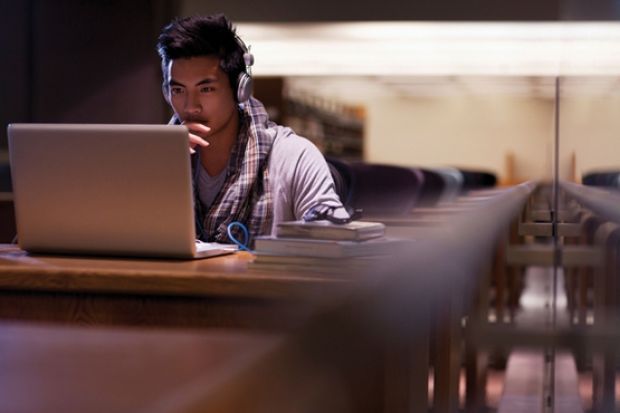Source: Alamy
Loving your work: personalised video feedback adds marking value for students
A simple, inexpensive technique allowing lecturers to record personalised video feedback while marking papers is being used to improve the student experience, and could be scaled up to help online learners.
Lecturers at Cardiff Metropolitan University are using screen-capture technology to give students the impression of being present during the marking process, allowing more targeted feedback to be given.
Using widely available computer recording programs, many of which are free, lecturers record themselves marking students’ papers, explaining where errors have been made and showing corrections. They then upload the footage to their university’s learning platform or email clips direct to students.
The team is so excited by the process that project leader Nigel Jones, senior lecturer in information systems, has sent a pack featuring a demonstration and set-up instructions to every UK university’s teaching and learning resource centre.
“In 2008 we had a lot of illness in the department, and our priority was, of course, keeping students happy by making sure there was always someone in the department,” Mr Jones explained.
“This meant I got very behind with my marking, and as I attempted to catch up I noticed that many of the students were making similar errors, which I wanted to tell them about.”
Using a free recording program, he brought up an image of a student’s work, and using the mouse cursor to highlight on screen the area that was being assessed, delivered his feedback to camera. Although the approach was initially more time-consuming and repetitive, it is now reducing marking time and offering students more effective feedback.
“What I can write is nowhere near as much as I can say when giving feedback to students,” Mr Jones said. “Based on our feedback, lecturers were typically spending 15 to 20 minutes on each student’s work. The videos are usually around eight to 12 minutes in length.”
The system is particularly popular with overseas students. “Often they are able to articulate questions about their mistakes but don’t fully understand the answers. This approach means they can replay the feedback as many times as they wish, and it avoids them having to ask repetitive questions,” he said.
The technique could also be used for distance learners and those on web-based courses. Selling video feedback to students taking free online courses, for example, could offer revenue streams to providers. “It’s something that we have been contacted about,” Mr Jones said.
Register to continue
Why register?
- Registration is free and only takes a moment
- Once registered, you can read 3 articles a month
- Sign up for our newsletter
Subscribe
Or subscribe for unlimited access to:
- Unlimited access to news, views, insights & reviews
- Digital editions
- Digital access to THE’s university and college rankings analysis
Already registered or a current subscriber? Login




